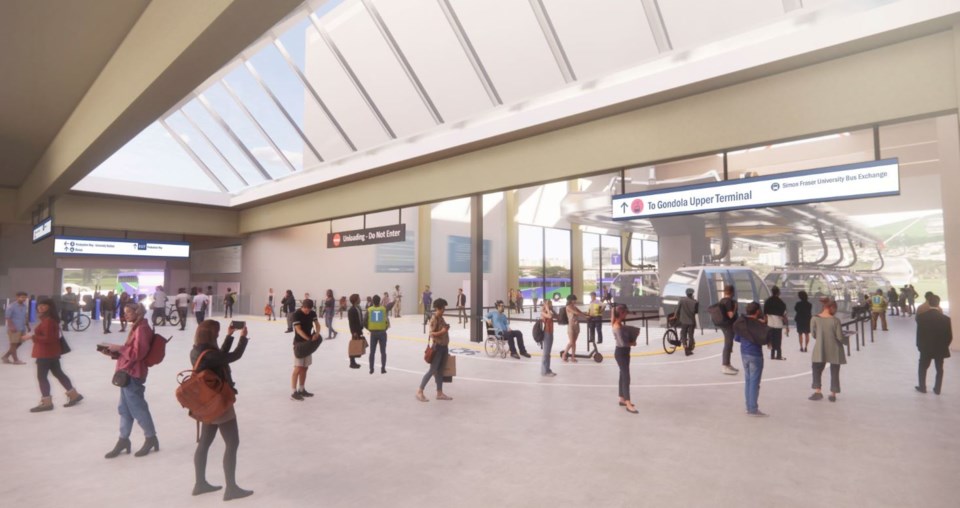The Editor:
Re: TransLink unveils 360° virtual tour of Burnaby Mountain gondola: public feedback wanted (Nov. 6, 2023)
Yet again, TransLink is entering into public engagement without new information in hand as they prepare to update their 2011 business case.
According to TransLink’s business case guide:
A Business Case defines a regional transportation problem (or opportunity) and evaluates the benefits, costs, impacts and risks for each potential initiative being considered. Business Cases support decision makers in making evidence-based and transparent decisions based on both quantitative and qualitative analysis.
So, what is the regional transportation problem here?
According to TransLink, the main regional transportation problem it believes a gondola would address is over-capacity and expanding ridership to and from SFU on the 145 bus route. How big is this problem? Can it be solved by running more buses on the existing road network?
According to the Daily Hive, TransLink ridership recovery is now at 90 per cent of pre-pandemic levels so it is fair to assess current ridership based on TransLink's 2019 data.
TransLink’s own data for 2019 shows that an average of 3,635 weekday return trips were made to and from SFU on the 145 bus route (Production Way SkyTrain station to SFU). As pointed out in 2022, this number of return trips per day is not a lot compared to many other bus routes in Metro Vancouver. In fact, as the "Stop the Burnaby Mountain Gondola Citizens Group" pointed out in 2022, TransLink's own data shows that the 145 bus route was only the 42nd most busy bus route out of 207 Metro Van routes in 2019.
In order to try to help justify constructing a gondola, TransLink says that, in future, the 1,550 passengers (using 2019 figures) who make the round trip on the 143 bus route from Burquitlam station to SFU will have to travel the further distance to Production Way to take the gondola.
Presumably, TransLink will have to continue to run some buses up the southeast slope of Burnaby Mountain to SFU for those who have a fear of heights or suffer from claustrophobia or who are otherwise fearful to take a gondola.
There seems to be no present ridership capacity issue to justify spending $210 million or more dollars to construct a gondola. But what about future capacity concerns?
As the following excerpt from page 8-3 of TransLink’s 2018 gondola feasibility study attests, SFU is approaching full "buildout:"
The Burnaby Mountain SFU campus is extremely space constrained; the campus has few options for lateral expansion due to the presence of the Burnaby Mountain Conservation Area and a strong desire to maintain the natural setting of the school and the mountain itself. SFU’s master plan (Endall Elliot, 2010) notes that the university is approaching full “buildout,” meaning that modest expansion foreseen under the campus master plan would fully utilize available land. By enhancing transit – improving reliability and reducing travel times – the BMGT could reduce demand for parking on campus, reducing the need for costly structured parking and making existing surface parking lots available for development.
This means that, unlike cities at the perimeter of Metro Vancouver that have an urgent need for transportation dollars, there cannot and will not be significant future growth on top of Burnaby Mountain.
Other factors that are relevant to the question of future public transit ridership to and from SFU:
-
Every year, SFU surveys residents of UniverCity on various topics about living on top of the Mountain. The residents of UniverCity typically report that they prefer to use their cars when they travel to and from the top of the Mountain.
-
Students would be less at the mercy of public transit if SFU fulfilled the commitment it made in the SFU Official Community Plan (a subset of Burnaby’s Official Community Plan) to build 5,600 units of student housing in the University Enclave.
-
The role of online learning should also be considered when it comes to students’ present and future transit needs – a matter that is particularly relevant for "snow days."
-
Burnaby is planning to construct safe cycling infrastructure to and from SFU that would serve the needs of some travellers to SFU. Others may continue to use private car or car share.
In conclusion, it is not necessary to take a sledgehammer to a butterfly. TransLink can make the lives of the 3,635 people who take the 145 bus to SFU and back each day a little easier with better service or an added bus route.
In the future, TransLink can add more buses or more bus routes to SFU as ridership figures may justify.
Instead of building this vanity project, TransLink should be putting taxpayers’ scarce transportation dollars to work where they are most needed in Metro Vancouver.
- Jennessa Baker (in her personal capacity)





